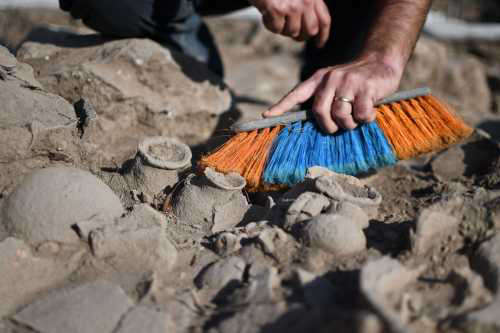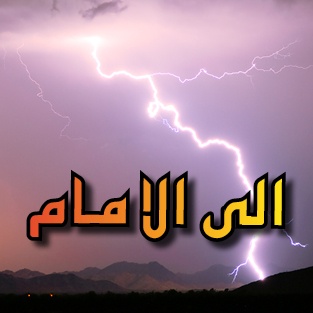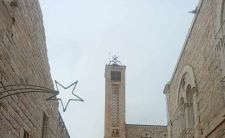
Near Beit Shemesh
Near Beit Shemesh a public building was uncovered that might have served as a cultic worship site, with a room containing dozens of intact vessels, and a Pottery kiln about 5,000 years old - one of the earliest ever found in the Holy Land.
It seems that this site, discovered in Israel Antiquities Authority excavations in preparation for expanding the city’s western industrial zone, called 'Brosh' (Cypress Tree), being developed by the Shamir Engineering Group and the Bet Shemesh Economic Development Company, played a central role in the Judean Lowlands (Shephelah) Early Bronze Age settlement network. The beautiful vessels from this site will be displayed tomorrow (Wednesday) and Thursday at the 17th “Discoveries in the Archaeology of Jerusalem and its Surroundings Conference” to be held at the Jay and Jeanie Schottenstein National Campus for the Archaeology of Israel.
A 5,000-year-old settlement, which provides a view of the beginning of the urbanization process in the Holy Land, was discovered in the Israel Antiquities Authority excavations near Beit Shemesh at the site of Hurvat Husham. The excavations took place in preparation for the expansion of the city’s western industrial zone, 'Brosh', at the initiative of the Shamir Engineering Group and the Bet Shemesh Economic Development Company. The discovery will be presented this week at the 17th “Discoveries in the Archaeology of Jerusalem and its Surroundings Conference,” which will be held at the Jay and Jeanie Schottenstein National Campus for the Archaeology of Israel.
The excavation revealed, among other things, a public building that may have been used for ritual activity, and in it a room with about 40 vessels preserved intact. Among them were also many tiny vessels, whose size suggests they were not for domestic use, but rather had a mainly symbolic purpose. The vessels were preserved in their original place – just as they were placed by the people living there in the Early Bronze Age IB (end of the 4th millennium BCE). According to Ariel Shatil, Maayan Hemed and Danny Benayoun, the Israel Antiquities Authority excavation directors, “It is interesting that these many pots and juglets were placed here just shortly before the entire site was abandoned forever. You can literally imagine the people who put down this ware and left it all here. It is not known what happened in this room later, but there are signs of burning, and vessels that fell on top of each other. Laboratory examination of their former contents of the vessels using different scientific methods will shed additional light on the site: We will be able to tell if they contained oil, water, wheat – or perhaps they were specifically for exotic oils or other substances.”
“The size of this structure that we uncovered, its broad walls, the benches inside it and other variables indicate that it is an important and exceptional structure with a public function – perhaps a temple,” say the excavation managers. “We know almost no public buildings in Israel
from this ancient period and earlier,” say the researchers. “Comparison with the few known buildings of this type produces the conclusion that this is probably one of the earliest temples ever discovered in the Judean Lowlands.”
Near the public building, a complex was discovered with large standing stones arranged in rows. “The standing stones were erected even before this enclosed public building was erected. Their presence promises to be instructive of the socio-political process involved in the founding of the cultic service in Hurvat Husham – it seems that originally there was an open cultic activity area for the general public which then transformed into ritual activity in an enclosed compound with more controlled access. This development process on the site, along with other processes, attests to an increase in social complexity,” says Dr. Yitzhak Paz, Early Bronze Age expert at the Israel Antiquities Authority. “This is one of the indicators of urbanization development in Israel during the Early Bronze Age. Two kilns for pottery manufacture were also discovered at the site, from the earliest ever discovered in Israel.”
The ancient settlement in Hurvat Husham was first discovered in 2021, in excavations conducted by Marion Zindel and Natan Ben-Ari on behalf of the Israel Antiquities Authority. In the last three-and-a-half years the excavation was expanded which clarified the extent of the site and its importance for understanding the origins of the urbanization process in Israel.
The Early Bronze Age is one of the most complex periods in Israel's history, during which dramatic changes took place in the lifestyle and worldview of the region’s inhabitants. The number of people who lived in Israel increased dramatically. For the first time social complexity was created, as well as the political structure of a hierarchical society. At the peak of the period, the acceleration of the urbanization phenomenon is evident, and monumental public construction can already be seen –fortifications, religious and government buildings, expertise and standardization in various industries, and more intensive trade with neighboring regions such as Egypt, Syria, Anatolia and Mesopotamia.
“The site uncovered in Hurvat Husham is exceptional not only because of its size, but because it reveals to us some of the first characteristics of the transition from village life to urban life,” say the excavation managers. “The site teaches us that about 5,000 years ago, the first steps were already taken towards the development of an urban society in the Judean Lowlands. A few generations later, we already see large cities in the area, surrounded by a wall, with palaces and other buildings – such as at the site of Tel Yarmouth, which is in this site’s range of vision.”
According to Israel Antiquities Authority Director Eli Escusido, “The Land of Israel, due to its nature and its geographical location, was a fertile ground for the development of ancient civilizations. The Hurvat Husham site uncovered by the researchers of the Israel Antiquities Authority, reveals another important piece in the puzzle of urban development in our region.”
 الى الامام
الى الامام
 إضاعة الوقت
إضاعة الوقت
 ما الذي يحدث في سوريا ?
ما الذي يحدث في سوريا ?
 ما الذي يحدث في سوريا ?
ما الذي يحدث في سوريا ?